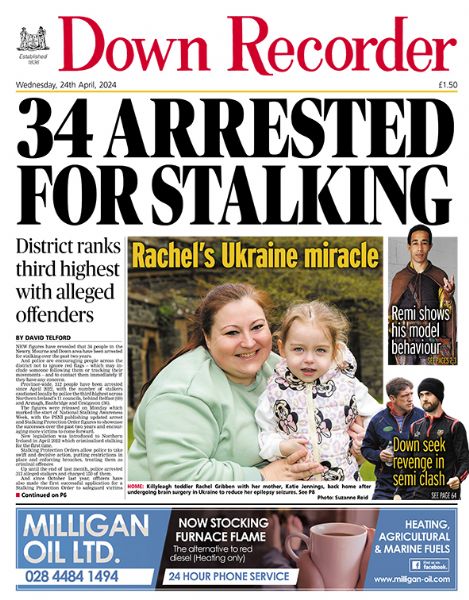Treasure finds off to British Museum
Treasure finds off to British Museum
3 July 2013
TO Tom Crawford the heavy lump of metal he had just dug out of the ground looked like scrap.
But ever the dedicated treasure hunter, he decided to clean it up and take it to a jeweller — just in case. His decision was quickly justified when the metal turned out to be a gold ingot, more than 300 years old and probably of Viking origin.
Last week Tom’s discovery, made on farmland at Legananny, near Castlewellan, was legally declared to be treasure and handed over to the British Museum.
Also presented to the museum was another of Tom’s discoveries — a rare medieval brooch of which there are only 140 known examples in Ireland.
Details of the discoveries were made during a hearing at the Coroner’s Court in Belfast which has the responsibility for deciding if discoveries are treasure.
The inquiry dealt first with the Viking ingot which Mr. Crawford found on the farmland of Stewart McGladdery on February 22. Greer Ramsey, of Armagh County Museum, told the court that gold was very rare in the Viking period, and said: “The gold ingot is quite small in size, less than 3cms. It has a gold content of 86%, the remaining being silver.
“Viking gold and silver occurs as a little ingot or bar, or as various forms of jewellery. It was used as a currency depending on weight and it was not uncommon for them to hack it into smaller amounts.
“The metal content was independently tested and it is 86% gold and certainly more than 300 years old, so it is definitely treasure,” said Mr. Ramsey.
The silver medieval brooch, which is only 14 millimetres in diameter, was found two days later on farmland belonging to Robert Moorhead.
“This type is well represented in Britain, Ireland and Europe, to pin clothes at the neck and to be decoration,” said Mr. Ramsey. “This may have been for decoration.
“At the site we visited there is a remain of a medieval church so may lie in an Anglo Norman territory. The metal content is estimated at 95% and it’s from the late Medieval period in the 13th to 14th century,” he said.
Both finds were declared treasure and they will be held in the British Museum to be valued by the Treasure Valuation Committee. Then if National Museums Northern Ireland want to buy the objects they will have to pay the appropriate money which will be split between the finder and the landowners.
Mr. Crawford has been using a metal detector for 15 years since he retired and the more recent discoveries are not his only finds.
“Twelve years ago I found a small hoard of silver coins that went to Banbridge Coroner’s Court,” he said. “I had average luck. Anyone who goes out with a metal detector could spend all day and just come home with bottle tops.
“Everything the museum wanted went to them. To me the great excitement is building the history of the country, rather than keeping things in a box under the bed.”

